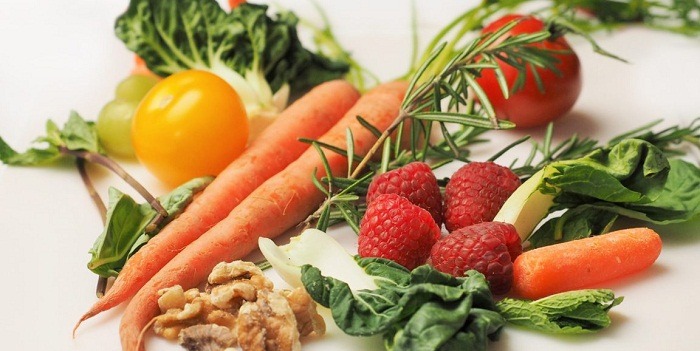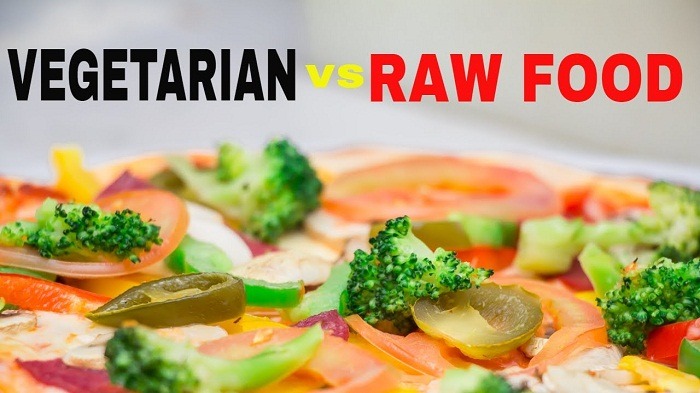What is the Raw Foods Diet
Contents
- 1 What is the Raw Foods Diet
- 2 Raw Foods Diet Macros
- 3 Benefits of the Raw Foods Diet
- 4 Downsides of the Raw Foods Diet
- 5 Raw Foods Diet Details
- 6 Best Foods to Eat on the Raw Foods Diet
- 7 Foods to Avoid on the Raw Foods Diet
- 8 Keys to Success on the Raw Foods Diet
- 9 Common Myths About the Raw Foods Diet
- 10 Common Mistakes on the Raw Foods Diet
- 11 Common Questions About the Raw Foods Diet
- 12 Raw Foods VS Paleo
- 13 Raw Foods VS Vegetarian
- 14 Raw Foods VS Vegan
- 15 Best Raw Foods Diet Supplements
- 16 Raw Foods Diet Recipes and Resources
- 17 Raw Foods Diet Studies
- 18 Proponents of the Raw Foods Diet
- 19 In Conclusion
- 20 FAQs
In the pursuit of optimal health and well-being, many individuals turn to alternative dietary lifestyles, and one such lifestyle that has gained popularity is the Raw Foods Diet. Also known as Raw Foodism or Raw Veganism, this dietary philosophy goes beyond a simple choice of food; it is a holistic approach that advocates the consumption of unprocessed, uncooked, and preferably organic foods. In this extensive guide, we will delve deeply into the intricacies of the Raw Foods Diet, exploring its macros, extolling its potential benefits, scrutinizing its downsides, and offering practical insights into the best foods to eat and those to avoid.
Related Post: Whole30 Diet: A Comprehensive Exploration of Nutrition and Well-Being
Raw Foods Diet Macros
At the core of the Raw Foods Diet lies a meticulous balance of three primary macronutrients: carbohydrates, fats, and proteins. Carbohydrates are predominantly sourced from fruits, vegetables, and sprouted grains, providing a sustainable and energy-rich foundation for daily activities. Healthy fats, crucial for cognitive function and hormonal balance, are derived from avocados, nuts, seeds, and cold-pressed oils. Proteins, vital for muscle repair and overall health, are obtained from a combination of nuts, seeds, legumes, and select leafy greens. Achieving equilibrium among these macronutrients is imperative to ensure that the body receives the necessary nutrients for optimal functioning.
Benefits of the Raw Foods Diet

Proponents of the Raw Foods Diet passionately advocate for its potential benefits, which extend far beyond basic nutrition. A fundamental tenet of this lifestyle is the belief that raw foods are rich in enzymes, essential for digestion and nutrient absorption. Enzymes, proponents argue, are compromised or denatured during cooking, making the consumption of raw foods crucial for preserving these vital elements. Advocates often report not only increased energy levels and improved skin complexion but also enhanced weight management. Furthermore, the Raw Foods Diet is purported to reduce the risk of chronic diseases, fostering overall well-being through a nutrient-dense, plant-based approach.
Downsides of the Raw Foods Diet
However, as with any dietary approach, the Raw Foods Diet is not without its criticisms and potential downsides. One significant concern is the risk of nutrient deficiencies. Cooking has been shown to enhance the bioavailability of certain nutrients, such as lycopene in tomatoes and beta-carotene in carrots, which may be compromised in a raw-only diet. Meeting daily caloric and protein needs can be challenging for some individuals, potentially leading to energy imbalances and muscle loss. The diet’s restrictive nature may also pose social challenges, as it may limit the variety of options when dining out or attending social events. Acknowledging these challenges is essential for individuals considering or already committed to the Raw Foods Diet.
Raw Foods Diet Details

The Raw Foods Diet encompasses a broad spectrum of uncooked foods, emphasizing the consumption of fruits, vegetables, nuts, seeds, sprouted grains, and legumes. The degree of adherence to the diet may vary among practitioners, with some including raw dairy and eggs while others strictly adhere to a vegan approach. Preparation methods often involve blending, dehydrating, or sprouting to enhance flavors and textures. It is crucial for individuals following this diet to prioritize a diverse and nutrient-rich selection of foods to ensure they meet their nutritional requirements.
Best Foods to Eat on the Raw Foods Diet
Certain foods emerge as stars in the Raw Foods Diet due to their nutritional density and compatibility with the raw lifestyle. Leafy greens, with their abundance of vitamins and minerals, serve as a foundation for many raw meals. Berries provide antioxidants, avocados contribute healthy fats, while nuts and seeds offer protein and essential fatty acids. Sprouted grains add variety and nutrients to the diet. Emphasizing organic and locally sourced produce is encouraged to maximize nutritional benefits and minimize exposure to pesticides.
Beyond the basics, incorporating a variety of colors, textures, and flavors is key to maintaining interest and ensuring a well-rounded nutrient intake. Experimenting with different combinations and seasonal produce can elevate the raw food experience, making it both enjoyable and satisfying.
Foods to Avoid on the Raw Foods Diet

Maintaining the purity of the Raw Foods Diet requires practitioners to steer clear of processed foods, refined sugars, and anything cooked at high temperatures. The focus is on consuming foods in their natural, unaltered state. Depending on individual preferences, some practitioners eliminate all animal products, while others may include raw dairy and eggs. The key is to adhere to the diet’s core principles of consuming raw, unprocessed, and natural foods.
Additionally, avoiding foods that may be difficult to digest in their raw form is essential. Some individuals may find that certain raw vegetables, particularly cruciferous ones like broccoli and cauliflower, can cause digestive discomfort. Being attuned to one’s body and making adjustments as needed is integral to a successful Raw Foods Diet journey.
Keys to Success on the Raw Foods Diet
Successfully adhering to the Raw Foods Diet requires more than just an understanding of nutritional principles; it demands careful planning, mindfulness, and a commitment to the journey. Key factors for success include:
- Gradual Transition: Abruptly shifting to a raw diet can be challenging for the body. A gradual transition allows the digestive system to adapt to the increased fiber and enzyme intake.
- Meal Preparation: Planning meals ahead of time ensures a variety of nutrient-dense foods and helps prevent reliance on convenience or processed options.
- High-Quality Produce: Emphasizing organic and locally sourced produce enhances the nutritional quality of the diet and minimizes exposure to pesticides and other chemicals.
- Hydration: Staying adequately hydrated is crucial for overall health, digestion, and detoxification. Consuming water-rich fruits and vegetables contributes to hydration.
- Diverse Foods: Including a wide variety of raw foods ensures a broad spectrum of nutrients. Eating the rainbow, or incorporating fruits and vegetables of different colors, is a simple way to achieve this diversity.
- Listening to the Body: Paying attention to hunger and satiety cues, as well as being aware of how the body responds to different foods, is essential for personalized success on the Raw Foods Diet.
- Educating Yourself: Continuously learning about nutrition, recipe ideas, and the potential challenges of the Raw Foods Diet provides the knowledge needed for sustained success.
- Supportive Community: Connecting with others who share similar dietary choices can provide a sense of community, shared experiences, and valuable insights.
- Mindful Eating: Cultivating a mindful approach to eating, focusing on the sensory experience of each bite, promotes a positive relationship with food and enhances satisfaction.
- Supplementation: Depending on individual needs, considering supplements such as vitamin B12, vitamin D, omega-3 fatty acids, and iron can help address potential nutritional gaps.
Understanding that the Raw Foods Diet is not a one-size-fits-all approach and may require individual adjustments is crucial for long-term success.
Common Myths About the Raw Foods Diet
As with any popular dietary approach, the Raw Foods Diet is surrounded by myths and misconceptions. Dispelling these myths is essential for fostering a more accurate understanding of this lifestyle:
- Myth: All Raw Foods Are Healthier: While raw foods offer nutritional benefits, assuming that all raw foods are inherently healthier ignores the importance of balance and variety. A diverse and well-rounded diet is key to meeting all nutritional needs.
- Myth: Cooking Destroys All Nutrients: The belief that cooking universally destroys nutrients overlooks the fact that certain nutrients become more bioavailable through cooking. The emphasis should be on understanding the optimal preparation methods for different foods.
- Myth: Raw Foods Diet Guarantees Weight Loss: While some individuals may experience weight loss on the Raw Foods Diet, it is not a guaranteed outcome. Factors such as overall caloric intake, food choices, and individual metabolism play crucial roles.
- Myth: Raw Foods Diet Provides All Necessary Nutrients: Relying solely on raw foods may lead to potential nutrient deficiencies, particularly in vitamin B12, iron, and omega-3 fatty acids. Supplementing and careful food choices are necessary to address these concerns.
- Myth: Raw Foods Diet Is Suitable for Everyone: The Raw Foods Diet may not be suitable for everyone, especially individuals with certain health conditions or specific nutritional needs. Consulting with a healthcare professional before adopting this lifestyle is advisable.
- Myth: All Cooking Is Detrimental: Not all cooking methods are detrimental to nutrients. Some methods, such as steaming and blanching, can enhance nutrient availability while making certain foods more digestible.
Understanding these myths is crucial for individuals navigating the Raw Foods Diet, helping them make informed choices aligned with their health goals.
Common Mistakes on the Raw Foods Diet

Awareness of potential pitfalls can guide individuals on the Raw Foods Diet to avoid common mistakes that might hinder their progress:
- Neglecting Key Nutrients: Overlooking the need for certain nutrients, such as vitamin B12, iron, and omega-3 fatty acids, which are predominantly found in animal products, can lead to deficiencies.
- Overemphasizing Fruit Intake: Relying too heavily on fruit can contribute to an imbalance in macronutrients, particularly an excessive intake of sugars. Including a variety of fruits, vegetables, nuts, and seeds is essential for a well-rounded diet.
- Ignoring Caloric Needs: Underestimating calorie needs is a common mistake, leading to insufficient energy intake and potential health issues. Understanding individual caloric requirements is vital for overall well-being.
- Poor Food Hygiene: Neglecting proper food hygiene when handling raw foods can increase the risk of foodborne illnesses. Washing produce thoroughly and following safe food handling practices is essential.
- Not Adapting to Individual Needs: The Raw Foods Diet is not a one-size-fits-all approach. Failing to adapt the diet to individual preferences, nutritional needs, and health conditions can hinder long-term success.
- Excessive Restriction: Imposing strict rules without flexibility may lead to feelings of deprivation and make it challenging to sustain the Raw Foods Diet. Allowing for occasional flexibility can contribute to a more balanced and enjoyable experience.
- Lack of Social Preparedness: Social situations that involve shared meals or dining out may pose challenges for individuals on the Raw Foods Diet. Planning and communication are key to navigating these situations without compromising dietary choices.
- Focusing Solely on Quantity, Not Quality: Prioritizing quantity over the quality of foods can undermine the nutritional benefits of the Raw Foods Diet. Emphasizing nutrient-dense, whole foods is essential for overall health.
Being mindful of these potential mistakes empowers individuals to navigate the Raw Foods Diet more successfully, enhancing both physical and mental well-being.
Common Questions About the Raw Foods Diet

As interest in the Raw Foods Diet grows, individuals often have questions about its practicality and sustainability. Addressing these common questions provides clarity and guidance for those considering or already on the Raw Foods Diet:
Is Protein Intake Adequate on a Raw Foods Diet?
While protein sources in the Raw Foods Diet are plant-based, combining various nuts, seeds, and legumes can provide sufficient protein. However, individuals with higher protein needs may need to plan their meals more carefully.
How to Address Nutrient Deficiencies?
Incorporating a variety of nutrient-dense foods and considering targeted supplements can help address potential nutrient deficiencies, especially in vitamin B12, iron, and omega-3 fatty acids.
Managing Social Situations: Navigating social situations where raw options may be limited requires planning and communication. Bringing raw dishes to share or selecting restaurants with raw-friendly options can help individuals stay true to their dietary choices.
Is the Raw Foods Diet Suitable for Children?
The Raw Foods Diet may pose challenges in meeting the nutritional needs of growing children. Consulting with a pediatrician or a nutritionist to ensure adequate nutrient intake is crucial for children on this diet.
Dealing with Cravings: Cravings for cooked foods may arise, especially during the initial transition to the Raw Foods Diet. Experimenting with different raw recipes, exploring new flavors, and understanding the psychological aspects of cravings can help individuals manage these challenges.
Balancing Macronutrients: Achieving a balance among carbohydrates, fats, and proteins is essential for overall health. Planning meals that incorporate a variety of raw foods can contribute to a well-rounded macronutrient profile.
Sustainability of the Raw Foods Diet: Maintaining the Raw Foods Diet long-term requires careful consideration of individual preferences, nutritional needs, and lifestyle factors. Some individuals may choose a partially raw approach to enhance sustainability.
Ensuring Adequate Caloric Intake: Meeting daily caloric needs can be challenging on a Raw Foods Diet, given the lower caloric density of some raw foods. Including energy-dense options such as avocados and nuts and monitoring portion sizes can help ensure adequate caloric intake.
Addressing these questions provides valuable insights for those navigating the Raw Foods Diet, helping them make informed choices and fostering a more sustainable and enjoyable experience.
Raw Foods VS Paleo

Comparing the Raw Foods Diet with the Paleo diet, another popular dietary approach that emphasizes natural, unprocessed foods, sheds light on the nuanced differences in philosophy and nutritional approaches.
The Paleo diet, also known as the Caveman or Stone Age diet, draws inspiration from the presumed diet of our ancestors during the Paleolithic era. It includes lean meats, fish, fruits, vegetables, nuts, and seeds. While both diets share a focus on whole foods and avoidance of processed items, their views on cooking and specific food choices set them apart.
The Raw Foods Diet strictly adheres to the consumption of uncooked, plant-based foods. Cooking is viewed as detrimental to the nutritional value of food, and practitioners aim to preserve the natural state of their food. In contrast, the Paleo diet permits certain cooking methods, emphasizing the importance of choosing minimally processed, nutrient-dense foods.
Individuals seeking a diet that allows more flexibility in food preparation methods may find the Paleo diet a suitable alternative to the Raw Foods Diet. It accommodates a wider range of dietary preferences, including those who prefer incorporating cooked animal products into their meals.
Understanding the distinctions between these two diets empowers individuals to choose the one that aligns more closely with their values, preferences, and health goals.
Raw Foods VS Vegetarian
Contrasting the Raw Foods Diet with vegetarianism sheds light on the unique challenges and benefits of each dietary approach. Vegetarianism involves abstaining from meat, but cooking is not strictly forbidden, allowing for greater flexibility in food preparation.
The Raw Foods Diet, on the other hand, strictly adheres to the consumption of uncooked, plant-based foods. It goes beyond abstaining from meat, emphasizing the importance of preserving the natural state of food to maximize its nutritional value. While both diets share a common foundation of plant-based eating, their perspectives on cooking and specific food choices differ significantly.
Vegetarianism embraces a broader range of food preparation methods, including cooking. Vegetarians can include a variety of cooked plant-based foods, such as grains, legumes, and cooked vegetables, in their diet. This flexibility allows for a more diverse array of meal options, making it potentially easier for individuals to meet their nutritional needs.
In contrast, the Raw Foods Diet excludes cooking altogether, with a focus on consuming raw, unprocessed, and natural foods. This strict adherence to raw consumption sets it apart from vegetarianism, emphasizing the belief that cooking can diminish the nutritional content of foods.
Individuals exploring these dietary paths must consider their personal preferences, health goals, and the practical aspects of food preparation. Vegetarianism may be a more accessible transition for those seeking a plant-based lifestyle with the option of cooked foods. On the other hand, the Raw Foods Diet requires a commitment to a wholly uncooked, plant-based regimen, demanding careful planning and dedication to achieve nutritional balance.
Raw Foods VS Vegan

The Raw Foods Diet and veganism both align with ethical and environmental considerations by excluding animal products from their dietary choices. However, they differ in their stance on cooking and the preparation of plant-based foods.
Vegans adhere to a plant-based diet that may include cooked foods, provided they are free from animal products. This flexibility allows for a diverse range of meal options, including cooked grains, legumes, and plant-based substitutes. Vegans prioritize the exclusion of animal exploitation in all aspects of their lives, including dietary choices.
In contrast, the Raw Foods Diet promotes the consumption of foods in their natural, uncooked state to preserve their enzymatic content and nutritional value. This diet eliminates not only animal products but also cooked plant-based foods.
Choosing between the Raw Foods Diet and veganism involves considering individual preferences, nutritional requirements, and the practicality of maintaining each lifestyle. While both align with ethical considerations, the Raw Foods Diet requires a more restrictive approach, emphasizing raw, unprocessed plant-based foods.
Best Raw Foods Diet Supplements
While the Raw Foods Diet emphasizes obtaining nutrients from whole, unprocessed foods, meeting all nutritional needs solely through diet can be challenging. Therefore, some individuals on the Raw Foods Diet may consider supplements to address potential deficiencies and ensure overall well-being. Key supplements for individuals on the Raw Foods Diet may include:
- Vitamin B12: This essential vitamin, predominantly found in animal products, may be lacking in a plant-based diet. Supplementation or fortified foods can help prevent B12 deficiencies, supporting nerve function and red blood cell production.
- Vitamin D: Adequate sun exposure is the primary source of vitamin D, but supplementation may be necessary, especially in regions with limited sunlight. Vitamin D is crucial for bone health, immune function, and overall well-being.
- Omega-3 Fatty Acids: While nuts and seeds provide some omega-3 fatty acids, supplementing with algae-based omega-3 supplements can ensure a sufficient intake. Omega-3s are vital for heart health, brain function, and inflammation regulation.
- Iron: Plant-based iron (non-heme iron) is less easily absorbed than iron from animal sources. Consuming iron-rich foods alongside vitamin C-rich foods and considering supplementation can help prevent iron deficiencies.
- Calcium: Maintaining bone health is crucial, and while leafy greens and nuts provide some calcium, supplementation may be necessary, especially for individuals with increased calcium needs.
It’s essential to consult with a healthcare professional before incorporating supplements, as individual needs vary based on factors such as age, gender, and health conditions. Supplementation should complement a well-rounded diet and not serve as a replacement for nutrient-rich foods.
Raw Foods Diet Recipes and Resources

Exploring creative and delicious recipes is integral to maintaining interest and satisfaction in the Raw Foods Diet. From refreshing smoothies to vibrant salads and inventive raw desserts, a wealth of recipes caters to different taste preferences and nutritional needs.
Green Smoothie Bowl:
Ingredients:
- 2 cups spinach or kale
- 1 frozen banana
- 1/2 avocado1 cup coconut water
- 1 tablespoon chia seeds
Instructions:
- Blend all ingredients until smooth.
- Pour into a bowl and top with fresh berries, sliced kiwi, and a sprinkle of granola.
Zucchini Noodles with Pesto:
Ingredients:
- 2 medium zucchinis, spiralized
- 1 cup cherry tomatoes, halved
- 1/2 cup pine nuts1 cup fresh basil1/4 cup nutritional yeast1 clove garlic1/2 cup olive oil
- Salt and pepper to taste
Instructions:
- In a food processor, combine basil, pine nuts, nutritional yeast, and garlic. Pulse until finely chopped.
- With the processor running, drizzle in the olive oil until a smooth pesto forms.
- Toss zucchini noodles with pesto and cherry tomatoes. Season with salt and pepper.
Raw Chocolate Avocado Mousse:
Ingredients:
- 2 ripe avocados
- 1/4 cup raw cacao powder
- 1/4 cup maple syrup or agave nectar1 teaspoon vanilla extract
- Pinch of sea salt
Instructions:
- Blend all ingredients in a food processor until smooth and creamy.
- Chill in the refrigerator for at least 30 minutes before serving.
- Garnish with berries or coconut flakes.
Online resources, books, and community forums provide valuable support and inspiration for those embracing the raw lifestyle. Sharing recipes, meal plans, and success stories within the raw food community fosters a sense of connection and encourages individuals to explore new culinary possibilities. Some notable resources include:
Websites and Blogs:
- Raw Food Recipes (rawfoodrecipes.com)
- FullyRaw by Kristina (fullyraw.com)
- The Rawtarian (therawtarian.com)
Books:
- “The Fully Raw Diet” by Kristina Carrillo-Bucaram
- “Raw Food: A Complete Guide for Every Meal of the Day” by Erica Palmcrantz Aziz and Irmela Lilja
Community Forums:
- Raw Food Rehab (rawfoodrehab.ning.com)
- Raw Food Talk (rawfoodtalk.com)
These resources offer a wealth of information, from beginner-friendly recipes to advanced culinary techniques, supporting individuals on their journey into the Raw Foods Diet.
Raw Foods Diet Studies

Scientific studies examining the health effects of the Raw Foods Diet are limited but increasing. Preliminary research suggests potential benefits, such as improved digestion and weight management. However, more extensive and long-term studies are needed to fully understand the diet’s impact on overall health, potential risks, and the feasibility of maintaining the diet over an extended period.
One study published in the “Journal of Nutrition and Metabolism” explored the effects of a raw vegan diet on cardiovascular risk factors. The study found significant improvements in lipid profiles, blood pressure, and body weight among participants following a raw vegan diet. However, the small sample size and the relatively short duration of the study warrant further investigation to establish long-term effects and potential risks associated with the Raw Foods Diet.
Another area of interest is the potential impact of the Raw Foods Diet on gut health. While the consumption of raw, fiber-rich foods can contribute to improved digestion and a healthy gut microbiome, individual responses may vary. The interaction between a raw diet and the gut microbiota is a topic that requires more in-depth exploration through controlled, longitudinal studies.
Understanding the nutritional implications of the Raw Foods Diet is crucial for individuals seeking evidence-based information. Long-term studies that assess nutrient levels, bone health, and overall well-being will contribute significantly to our understanding of the diet’s sustainability and potential drawbacks.
As the body of evidence grows, researchers are better equipped to assess the potential benefits and risks associated with this dietary approach. It is essential for individuals considering or already on the Raw Foods Diet to stay informed about emerging research findings and to approach the diet with a balanced perspective.
Proponents of the Raw Foods Diet
Prominent figures in the health and wellness community passionately advocate for the Raw Foods Diet, sharing their stories and insights. These advocates provide a wealth of information for individuals considering or already on this unique dietary path. Some notable proponents include:
- Kristina Carrillo-Bucaram: Known as FullyRaw Kristina, she is a popular raw food advocate, author, and founder of the FullyRaw community. Kristina shares her personal journey to health and offers practical tips for thriving on a raw diet.
- Tonya Zavasta: An author and speaker, Tonya Zavasta advocates for a raw food lifestyle for anti-aging benefits. She emphasizes the importance of raw foods in promoting radiant skin and overall well-being.
- Dr. Gabriel Cousens: A holistic physician and author, Dr. Cousens is a proponent of the raw, plant-based lifestyle. He has written extensively on the health benefits of a raw diet and its potential to prevent and reverse chronic diseases.
- Annette Larkins: Widely recognized for her youthful appearance, Annette Larkins attributes her health and vitality to a raw vegan diet. She has been featured in documentaries and interviews, inspiring others to explore the benefits of raw foods.
These proponents share their experiences of enhanced energy levels, improved digestion, and overall well-being on the Raw Foods Diet. Their insights provide motivation, inspiration, and practical tips for successfully navigating the challenges associated with this lifestyle.
In considering the perspectives of these advocates, it’s crucial for individuals to recognize that personal experiences may vary, and the Raw Foods Diet might not be suitable for everyone. The decision to adopt such a dietary approach should be made based on individual health goals, preferences, and consultation with healthcare professionals.
In Conclusion
In conclusion, the Raw Foods Diet offers a distinctive approach to nutrition, emphasizing the consumption of uncooked, natural foods. While it comes with potential benefits, individuals should carefully consider the potential downsides, plan their meals strategically, and stay informed about essential nutrients. Whether one chooses a fully raw or partially raw approach, the key is to prioritize a well-balanced, nutrient-dense diet that aligns with individual health goals and preferences.
Embracing the Raw Foods Diet requires dedication, thoughtful planning, and a willingness to explore new culinary horizons, ultimately leading to a holistic approach to health and well-being. As individuals embark on this journey, they can find support, inspiration, and a wealth of resources within the vibrant community that shares a commitment to the raw lifestyle.
Understanding the nuances of the Raw Foods Diet, including its macros, benefits, downsides, and practical details, equips individuals with the knowledge needed to make informed decisions about their dietary choices. Navigating the world of raw foods involves not only embracing a unique way of eating but also fostering a deeper connection with the food we consume and its impact on our overall health.
As the Raw Foods Diet continues to gain attention and interest, ongoing scientific research, shared experiences, and a supportive community contribute to the evolving understanding of this dietary approach. Whether one is drawn to the potential health benefits, ethical considerations, or environmental impact, the Raw Foods Diet invites individuals to explore the richness of nature’s bounty in its most natural state.
In this journey toward a raw lifestyle, individuals can celebrate the diversity of raw recipes, connect with like-minded communities, and stay attuned to their bodies’ needs. Ultimately, the Raw Foods Diet beckons individuals to embark on a path of wellness, mindful eating, and a profound appreciation for the nourishing power of raw, unprocessed foods.
FAQs
Here’s a list of some most asked questions about the Raw Foods Diet:
- What is the Raw Foods Diet?
The Raw Foods Diet is a dietary lifestyle that emphasizes the consumption of uncooked, natural foods. It typically includes fruits, vegetables, nuts, seeds, and sprouted grains in their raw state to preserve their nutritional value.
- Why do people choose the Raw Foods Diet?
Individuals may choose the Raw Foods Diet for various reasons, including the belief that raw foods retain more nutrients, enzymes, and antioxidants. Some adopt it for potential health benefits, improved digestion, weight management, or ethical and environmental considerations.
- What foods are allowed on the Raw Foods Diet?
Allowed foods include raw fruits, vegetables, nuts, seeds, sprouted grains, and certain fermented foods. Some practitioners also include raw dairy and eggs, while others strictly adhere to a vegan approach.
- Is all cooking strictly prohibited on the Raw Foods Diet?
Yes, the Raw Foods Diet advocates against any form of cooking, believing that heat can destroy enzymes and nutrients in food. Practitioners aim to consume all their foods in their natural, uncooked state.
- What are the potential benefits of the Raw Foods Diet?
Advocates suggest potential benefits such as increased energy levels, improved digestion, weight management, and a reduced risk of chronic diseases. The diet is also praised for its focus on whole, plant-based foods.
- Are there any downsides to the Raw Foods Diet?
Potential downsides include the risk of nutrient deficiencies, challenges in meeting daily caloric needs, and social difficulties when dining out. Some individuals may find it challenging to sustain the diet in the long term.
- Can I get enough protein on the Raw Foods Diet?
While protein sources on the Raw Foods Diet are plant-based, combining various nuts, seeds, and legumes can provide sufficient protein. However, individuals with higher protein needs may need to plan their meals more carefully.
- How do I address potential nutrient deficiencies on the Raw Foods Diet?
Incorporating a variety of nutrient-dense foods, considering targeted supplements, and periodically assessing nutrient levels with healthcare professionals can help address potential deficiencies, particularly in vitamin B12, iron, and omega-3 fatty acids.
- Is the Raw Foods Diet suitable for children?
The Raw Foods Diet may pose challenges for meeting the nutritional needs of growing children. Consulting with a pediatrician or a nutritionist to ensure adequate nutrient intake is crucial for children on this diet.
- How do I navigate social situations on the Raw Foods Diet?
Planning ahead, communicating dietary preferences, and bringing raw dishes to share can help individuals navigate social situations where raw options may be limited. Flexibility and understanding from friends and family are also essential.
- Is the Raw Foods Diet suitable for everyone?
The Raw Foods Diet may not be suitable for everyone, especially individuals with certain health conditions or specific nutritional needs. Consulting with a healthcare professional before adopting this lifestyle is advisable.
- Can I still eat warm or room temperature foods on the Raw Foods Diet?
While the emphasis is on consuming raw, uncooked foods, some practitioners may include warm or room temperature dishes prepared using dehydration or minimal heat. However, these methods should align with the diet’s principles of preserving nutrients.
- Are there specific guidelines for food preparation on the Raw Foods Diet?
Food preparation methods on the Raw Foods Diet include blending, dehydrating, and sprouting. The goal is to enhance flavors and textures without exposing foods to high temperatures. Creative preparation is encouraged for a varied and enjoyable raw food experience.
- How do I ensure I’m getting enough calories on the Raw Foods Diet?
Ensuring adequate caloric intake can be challenging due to the lower caloric density of some raw foods. Including energy-dense options such as avocados, nuts, and seeds, and monitoring portion sizes can help meet daily caloric needs.
- Can I drink beverages other than water on the Raw Foods Diet?
Yes, beverages like fresh fruit and vegetable juices, herbal teas, and coconut water are typically allowed on the Raw Foods Diet. However, processed and sugary drinks are discouraged.
- Is it necessary to buy all organic produce on the Raw Foods Diet?
While organic produce is encouraged to maximize nutritional benefits and minimize exposure to pesticides, it’s not an absolute requirement. Washing fruits and vegetables thoroughly can help reduce pesticide residues.
- How do I handle cravings for cooked foods on the Raw Foods Diet?
Cravings for cooked foods may arise, especially during the initial transition. Experimenting with different raw recipes, exploring new flavors, and understanding the psychological aspects of cravings can help manage these challenges.
- Can I exercise on the Raw Foods Diet?
Yes, exercise is compatible with the Raw Foods Diet. Staying active contributes to overall well-being. It’s essential to ensure sufficient energy intake and hydration, especially for individuals with active lifestyles.
- What role do supplements play in the Raw Foods Diet?
While the emphasis is on obtaining nutrients from whole foods, some individuals on the Raw Foods Diet may consider supplements, particularly for nutrients like vitamin B12, vitamin D, omega-3 fatty acids, iron, and calcium. Consultation with a healthcare professional is recommended.
- Is the Raw Foods Diet suitable for athletes or those with high energy needs?
Athletes and individuals with high energy needs can follow the Raw Foods Diet with careful planning. Including protein-rich foods, energy-dense fruits, and incorporating variety is crucial to meet increased caloric demands.
- How do I ensure a balanced intake of macronutrients on the Raw Foods Diet?
Planning meals that incorporate a variety of raw foods, including fruits, vegetables, nuts, and seeds, helps achieve a well-rounded macronutrient profile. Balancing carbohydrates, fats, and proteins is essential for overall health.
- Can I follow the Raw Foods Diet while traveling?
While traveling, individuals on the Raw Foods Diet can plan ahead by carrying portable raw snacks, researching raw-friendly restaurants, and being adaptable. Flexibility and preparation are key to maintaining the diet during travel.
- How long does it take to see the benefits of the Raw Foods Diet?
The time it takes to experience benefits varies among individuals. Some may notice increased energy and improved digestion relatively quickly, while others may require more time. Patience and consistency are crucial.
- Is there a recommended duration for following the Raw Foods Diet?
The duration of following the Raw Foods Diet is a personal choice. Some individuals adopt it as a long-term lifestyle, while others may use it as a temporary cleanse. Regular reassessment of individual health goals and preferences is advisable.
These FAQs provide a comprehensive guide to understanding the principles, challenges, and potential adjustments that may arise on the Raw Foods Diet.


